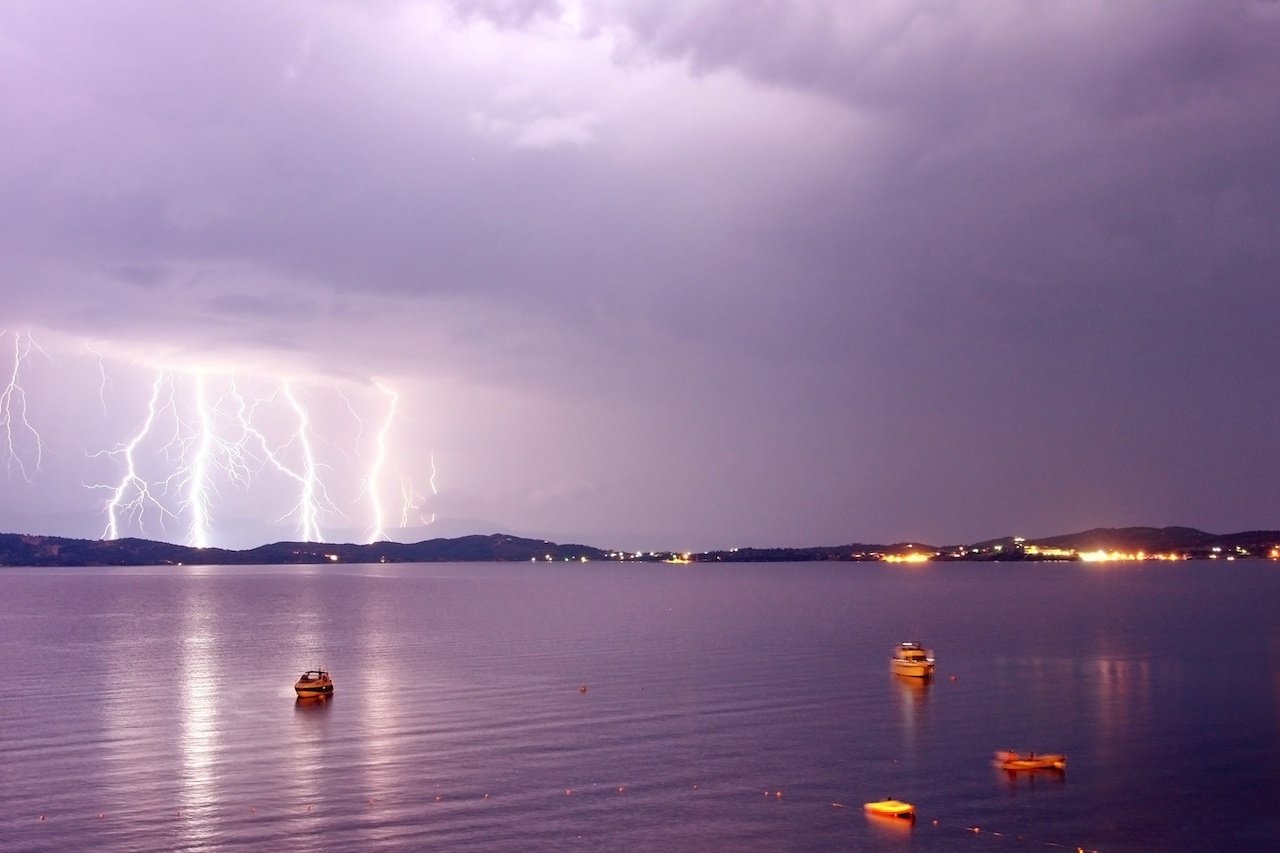When you spend time sailing the open water it is inevitable that you will run into a storm at some point. While nobody likes to think of being at the sea's mercy, it is always possible. Knowing what to do ahead of time is the best course of action - but what is that?
Find the Right Port
If you have advanced notice, you should try to find a port. Not just any port will do, however. Some ports are even more dangerous than being in the open sea, whether for traveling reasons or poor ancorages for your boat.
The ideal port will have high cliffs or mountains surrounding it, with a good holding. These are known as "hurricane holes." Once docked, boats should place the engine in reverse to set the anchor. When the boat or ship is tied off the chain should be allowed considerable slack. This allows for a dampening effect that helos with holding.
If you can't find the right port, you are left with two options: trying to outrun the storm or hoping your marine skills are ready to sail out the crashing waves and unrelenting wind. Outrunning the storm should obviously be the first option, and it is possible to do so if you know which way the storm is blowing.
Steer for the "Clean" Side of the Storm
If you must ride out a storm - such as when one appears without advanced warning or is moving too fast to outrun - you need to steer for the "clean" side of the storm. This is the side of the storm with the lowest waves and weakest winds.
You should be able to tell on sight which side is the clean side. Sometimes it can be difficult to tell, however, once you are in thick of the storm. Typically it will be counterclockwise from the storm's leading edge.
Avoid Objects
It should go without saying that you need to avoid objects during a storm. Take note that if you absolutely must ride out a storm, your safest bet is the farthest distance from any objects. This includes ports, other ships, buoys, lighthouses, shore, rocks, or anything else.
Even something as small as a buoy can become a major hazard when it is hurled against or atop your boat. Waves can propel an object with extraordinary strength. Besides causing damage to your boat, it can also knock a person unconscious thus making it easy to be swept overboard.
Advanced Preparations and Training
Anyone who plans on sailing outside of a bay or inlet should prepare themselves in advance and receive emergency training. This will give you the tools and confidence necessary to ride out a large storm like a hurricane.
In addition to strong sailing skills, sailors should undergo lifeguard training and first aid certification. You should also keep the following items on board at all times:
- a lifesaving device
- first aid kit (bandages, ointment, gauze, Tylenol)
- extra rope
- a sewing kit (for damaged sails)
- spare dry clothes
- nonperishable food and extra water
- flare gun with flares
Keep a Clear Head and A Watchful Eye
A clear head is imperative in surviving any dangerous situation. Weathering a major storm at sea is no exception. While it can be easy to panic, this only makes the situation worse. Once you can no longer think clearly the risk of injury or fatality is drastically increased.
Remember to keep a watchful eye on one another as much as possible. Use a buddy system for larger crews. This ensures that every man and woman is accounted for during the storm, decreasing the risk they will be washed overboard without anyone noticing. If there are small children, pets, pregnant women, or seniors on board, they should go below deck until the storm is done.
If you include these five items in your overall safety plan you should be able to weather out major storms with as little incidence as possible. For more information on boating safety or other marine topics contact us today.






